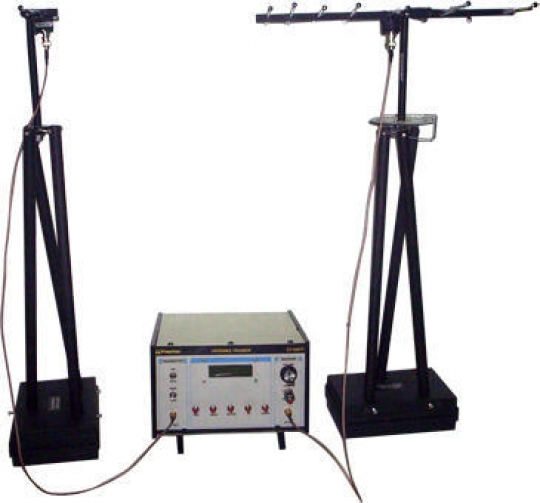 lab@motestainstruments.com | Civil and Mechanical Engineering Lab Equipments India China
lab@motestainstruments.com | Civil and Mechanical Engineering Lab Equipments India China

Code: MOT-COM-0011
Antenna Trainer.
The trainer must be designed to introduce students to the comprehension of the antennas
operation mode.
Technical features:
The trainer must include: basic panel with generator, Lecher line, RF detector, mobile receiver,
joint for fixing to the base, supporting base for receiver, reflector, locking knob, shielded
connecting cable between the Lecher line and the detector with banana plugs, diam. 2 mm
(length = 60 cm), set of cables for measuring and connections, coaxial support for antenna
(mast) with turning base, ‘T’ BNC, set of 5 monopoles with banana terminations, different
lengths, ground plane
Antenna, Yagi antenna, folded dipole antenna, simple dipole antenna, coaxial cable RG59 with
F/F BNC, length = 60 cm complete with M/M and F/F adapters.
Frequency: from 860 to 950 MHz.
Input power supply: †15 Vdc, 200 mA
The basic unit must be composed of a base in varnished aluminum which contains the RF
generator, the Lecher line and the RF detector/meter.
The generator frequency must be between 860 and 950 MHz, higher than the band used for the
TV broadcast and lower than the frequencies used for the cellular radio transmissions. The
generator must be provided with a manual control of the output power, with graduated scale
from 0 to 100 %. The generator output must be a BNC mounted on the front of the panel,
centered to a graduated disk.
On the BNC must be directly inserted the support for the power supply of the antennas, while
the graduated disk shall be used to orient the antenna with respect to an initial reference point,
as required during the experiments.
The generator must be designed with particular criteria in order to operate in potentially
difficult conditions that can be found in a school laboratory: it shall operate with no damage
with large load variations, antennas with very different characteristic impedances, or even
without load. The generator must be provided with two settings which shall be regulated by
removing the metal lower side of the panel.
The Lecher line shall be different from a standard line because it shall be provided with a cursor
composed of a coil which, from the transmission point of view, will be considered a mobile
short circuit. On the same basic panel it must be mounted the RF detector/meter to be coupled
with the Lecher line cursor
through the two wire cable (included).
The RF detector must be composed of: a real detector at maximum value, an attenuator
controlled by a knob in the front panel with graduated scale from 0 to 100 % (100% = maximum
attenuation, i.e. minimum signal), and a linear scale micrometer.
The trainer must include also a radiation mobile detector composed of a plastic case with a
folded pole, with adjustable reflector. The front must include a pointer instrument for the indication of the received signal intensity, an attenuator allowing the adjustment of the scale of
the instrument and two output bushes to which to connect external instrumentation (if
needed).
The radiation mobile detector must be a passive instrument which does not require batteries.
The trainer must be composed also of a series of antennas, some of which must be made of
mobile components so that it shall be possible to create different configurations.
Examples of performable exercises:
The Lecher line
Polarization
The elementary dipole
The folded dipole
The Yagi antenna
The ground plane antenna
The matching stub along English operating/instruction manual